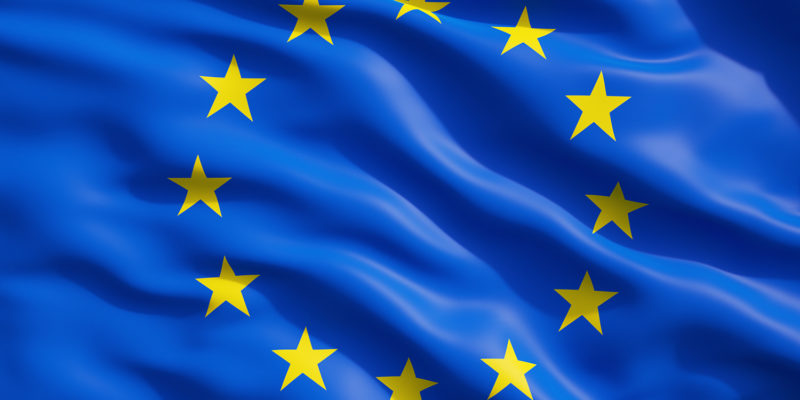Tackling Drug Shortages and Supply-Chain Vulnerabilities in the European Union
Leaders in the European Union (EU) are addressing ways to mitigate drug shortages and supply-chain vulnerabilities in the EU with 19 EU member states supporting a Critical Medicines Act to reduce the EU’s dependence of non-EU countries for APIs, intermediates and other pharma ingredients. What other actions is the EU taking to mitigate supply-chain vulnerabilities?
EU’s proposed legislative reforms and other actions
Shortages of medicines have been a serious concern in the European Union for several years. The COVID-19 pandemic, in particular, highlighted shortcomings of the current legal framework. The extension of the European Medicines Agency’s (EMA) mandate as part of the European Health Union improved coordination and management of the supply of medicines shortages during crises. The recently proposed legislation in the EU under the European Commission’s proposed Pharmaceutical Strategy for Europe, however, goes beyond crisis preparedness and response and seeks to address systemic shortages at all times. The new proposed legislation would enhance the monitoring and mitigation of medicines shortages, in particular critical shortages, at national levels and by the EMA. Under the proposal, pharmaceutical companies would have to report shortages of medicines more quickly and establish shortage prevention plans. Pharmaceutical companies would also have to address critical shortages and report on the results of the measures taken, such as the increase or reorganization of manufacturing capacity or the adjustment of distribution to improve supply.
In addition, the proposal calls for an EU list of critical medicines, referring to medicines considered to be most critical for health systems at all times, to be established. The proposed legislations calls for recommendations on measures to be taken by companies and other relevant stakeholders to strengthen the supply chains of those medicines in order to ensure continuity and security of supply for the EU. The proposed legislation also allows the European Commission to introduce, through an implementing act, measures to strengthen security of supply, including requirements to establish contingency stocks.
In the context of securing the supply of medicines, the proposed reforms do not directly address reshoring and “strategic autonomy,” an overarching policy objective of the European Commission that refers to the capacity of the EU to act autonomously, meaning without being dependent on other countries, in strategically important policy areas. Although strategic autonomy and reshoring are not directly addressed in the proposal, the European Commission says “there is sufficient flexibility to target specific vulnerabilities, including problematic dependencies.“
In parallel, the European Commission is setting up the EU FAB flexible manufacturing project, a network of so-called “ever-warm” single and/or multi-technology production capacities for vaccine and therapeutics manufacturing in the EU. The EU FAB facilities will be reserved for surge manufacturing capacity and will establish an inventory of production facilities, raw materials, consumables, equipment, and infrastructure. The participating production sites will have to make qualified staff available and have clear operational processes and quality controls in place. The EU FAB is intended to quickly and easily activate the EU’s network of manufacturing capacities to meet demand for vaccines and/or therapeutics needs until the market has scaled up production capacities.
In addition, the EU has also already established the Joint Industrial Cooperation Forum to find solutions to supply-chain bottlenecks and vulnerabilities as well as raw materials for medical countermeasures. This was established under the European Health Emergency preparedness and Response Authority (HERA), whose goal is to strengthen Europe’s ability to prevent, detect, and rapidly respond to cross-border health emergencies by ensuring the development, manufacturing, procurement, and equitable distribution of key medical countermeasures, which includes therapeutics, vaccines, diagnostics, and other products such as personal protective equipment. In addition, the Important Project of Common European Interest on Health would allow participating EU countries to allocate state aid to support innovative EU projects in health, including those relevant for security of supply. Also, the European Commission recently came forward with a proposal for Critical Raw Materials, which covers essential components to produce medicines and other medical countermeasures.
The proposals also call for the mandate of the EMA and its Executive Steering Group on Shortages and Safety of Medicinal Products (MSSG) to be extended with respect to the management of critical shortages and the security of supply of critical medicines. The proposal calls for an inspectorate to be established within the EMA to reinforce EU member states’ capacities, in particular for inspections in third countries (i.e., non-EU countries), to build efficiency in surveillance and support marketing authorization procedures.
19 EU member states call for more action
In addition to these measures, last month (April 2023), 19 EU member states issued a position paper to call on the EU to “take more drastic steps to improve the security of medicines supply.” They are calling for three main actions: (1) installing a voluntary solidarity mechanism within the MSSG to, as a last resort, temporarily alleviate acute shortages in EU member states; (2) establishing a European list of critical medicines whose supply, production, and value chains must be monitored; and (3) exploring a Critical Medicines Act to reduce dependencies for critical medicines and ingredients, particularly for products where there are only a few supplying manufacturers or countries. These three proposals are targeted in the short, medium and long term, and are seen as complementary to the initiatives already taken by the EMA, the MSSG, or the proposed reforms to the EU’s pharmaceutical legislation. These proposals are further detailed below.
Critical Medicines Act. A key part of the 19 EU member states’ proposal is to enact a Critical Medicines Act, modeled after two recent pieces of EU legislation: the European Chips Act, which seeks to address global shortages of semiconductors, also occurring in the EU, caused by supply issues of microchips by increasing EU’s domestic production of microchips and reducing the EU’s dependence on other countries for microchip supply, and the Critical Raw Materials Act, which sets targets for the production, refining, and recycling of key raw materials, such as rare earth metals, needed to support the EU’s green and digital economy. A Critical Medicines Act would similarly address the EU’s dependence on non-EU countries for active pharmaceutical ingredients (APIs), intermediates, and other pharma ingredients. It would been used as a toolbox of different instruments and be complementary to the EU’s proposed reforms to the EU’s pharmaceutical legislation and also take lessons learned from the Chips Act and Critical Raw Materials Act into account, such as the need for appropriate financing mechanisms.
An EU solidarity mechanism. The 19 EU member states also are calling for a voluntary solidarity mechanism to be set up within the MSSG to address drug shortages. Under this mechanism, in which EU member states would have to agree beforehand when this mechanism can be used, EU member states that have critically low stocks of important medicines and have exhausted all other available options to address supply issues, can send out a notification through this mechanism to which other EU member states may respond to provide some temporary relief. In addition, the proposal calls for this mechanism to invite manufacturers and wholesalers to participate.
A European list of critical medicines. The 19 EU member states are also calling on the MSSG to accelerate its work on a European list of critical medicines that would take into account work already done in this area, such as previous studies and stakeholder consultations, work by the European Health Emergency Preparedness and Response Authority (HERA) and the World Health Organization. The proposal calls for this list of critical medicines, for supply to be monitored, for global value chains to be mapped, for potential suppliers and vulnerabilities to be identified, and to begin with those medicines for which there have been repeated shortages in the past. The 19 EU member states’ proposal says that HERA is already mapping the value chains of some medicines in the framework of preparedness and that this work could be expanded. The EU member states also recommends to make optimal use of digital solutions to avoid creating excessive administrative burden for companies.
EMA issues guidance for mitigating drug shortages
In addition, earlier this month (May 2023), the EMA issued guidance to the various stakeholders involved in the medicine supply chain to identify their responsibilities and roles in the prevention and management of medicine shortages. It provides 10 recommendations for marketing authorization holders, wholesalers, distributors, and manufacturers to minimize the occurrence of medicine shortages and their impact. The recommendations include the following:
- Informing national competent authorities of potential or actual shortages as early as possible and providing detailed information to better predict the possible impact and implement preventive measures;
- Establishing shortage prevention and shortage management plans;
- Optimizing pharmaceutical quality systems and increasing resilience of complex, multinational supply chains;
- Timely communication between the various stakeholders in the medicine supply chain; and
- General principles to promote fair and equitable distribution of medicines to meet the needs of patients.
.
.








